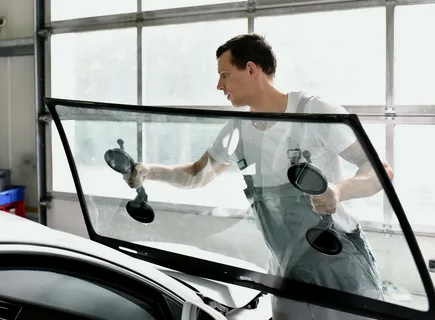What Is the Best Time for Windshield Replacement?
Windshield damage is more than just an inconvenience—it can pose serious risks to driver safety, vehicle integrity, and even legal compliance. Whether the glass is chipped, cracked, or shattered, timely replacement is essential. But beyond the need for replacement, an often-overlooked question arises: When is the best time to replace a windshield? The answer is not just about urgency; it also involves weather, temperature, technician availability, and other practical considerations.
Understanding the ideal timing for windshield replacement can ensure that the process is both effective and long-lasting. This article explores the factors that influence the best time to replace your windshield and provides insights to help vehicle owners make an informed decision.
Importance of Timely Windshield Replacement
The windshield plays a vital role in maintaining the structural integrity of a vehicle. It supports the roof, provides visibility, and is a critical component in the deployment of airbags. A small crack or chip can quickly escalate into a large fracture, especially under stress or temperature changes.
Delaying windshield replacement can lead to:
- Reduced visibility and increased accident risk
- Compromised structural strength in rollovers or collisions
- Costlier repairs if the damage worsens
- Legal penalties in regions with strict vehicle inspection laws
Timely replacement not only restores the safety of the vehicle but also prevents further damage and financial loss.
Factors That Affect the Timing of Windshield Replacement
Before identifying the best time for replacement, it’s important to understand the factors that influence the process. These variables affect both the safety and efficiency of windshield replacement.
Weather Conditions
Weather plays a significant role in windshield installation. Adhesives used during the replacement process need specific environmental conditions to cure properly.
- Cold weather can slow down adhesive curing time, especially if the temperature falls below 40°F (4°C). Technicians may need to use special adhesives or heat sources to facilitate proper bonding.
- Hot weather, particularly temperatures above 90°F (32°C), may cause adhesives to set too quickly, affecting alignment and installation accuracy.
- Rain, snow, or high humidity can interfere with adhesive effectiveness, increasing the risk of leaks or weakened seals.
Temperature Fluctuations
Sudden changes in temperature, such as parking a vehicle in direct sunlight after a cold night, can expand or contract the glass rapidly. This can cause existing cracks to spread or put additional stress on the newly installed windshield.
Ideal conditions for windshield replacement typically fall between 60°F to 80°F (15°C to 27°C), with stable humidity and no precipitation.
Availability of Professional Services
Like many automotive services, windshield replacement businesses may experience peak and off-peak seasons. For example, winter storms or springtime debris can lead to a surge in replacement needs, making appointment availability limited.
Choosing a time when service providers are less busy may result in:
- Faster scheduling
- More attention from technicians
- Better pricing or promotional offers
Daily Schedule and Convenience
Aside from environmental factors, your own schedule matters. Most windshield replacements require 1–2 hours of work and an additional 1–4 hours of curing time before the vehicle can be safely driven. You’ll need to plan ahead to accommodate this downtime.
Note:- The damaged glass had been fully removed, and the Windshield Replacement had been done with precision. Windmaster used quality materials and clean tools for a solid fit. The result had exceeded expectations. Let Windmaster take care of your windshield—book your service now!
Ideal Seasons for Windshield Replacement
While replacements can technically be performed year-round, certain seasons offer more favorable conditions.
Spring
Spring is generally a good time for windshield replacement. Temperatures are moderate, and humidity levels are manageable. However, early spring can bring rain and pollen, which may interfere with the installation process.
Advantages:
- Mild weather
- Fewer temperature extremes
- Easier scheduling before peak summer demand
Considerations:
- Watch for seasonal allergens or rain that may affect surface cleanliness and curing
Summer
Summer provides warm conditions that allow adhesives to cure quickly. However, excessive heat can cause rapid setting, which may lead to issues if not carefully managed.
Advantages:
- Fast curing times
- Less risk of rain or snow
Considerations:
- Heatwaves may require shaded areas or indoor service
- Vacation season can lead to limited technician availability
Autumn
Fall is often considered the best overall season for windshield replacement. Temperatures are stable, humidity is lower, and storm risks are reduced.
Advantages:
- Balanced temperature and humidity
- Less UV exposure during curing
- Quieter service periods post-summer
Considerations:
- Early frost in late autumn may pose timing challenges
Winter
Winter can be the most difficult time for windshield replacement due to cold temperatures and frequent precipitation.
Advantages:
- Off-season discounts and promotions may be available
Considerations:
- Slow adhesive curing unless special adhesives or heating techniques are used
- Snow and ice can complicate surface preparation
Weekdays vs Weekends
The day of the week can also influence the quality and convenience of your windshield replacement experience.
- Weekdays tend to offer better technician availability and more flexibility in scheduling. Shops are often less crowded, and you can benefit from faster service.
- Weekends are convenient for those with busy work weeks, but they may come with longer wait times or limited slots. Additionally, some repair shops may have reduced hours on weekends.
If possible, schedule appointments during the early weekdays—such as Tuesday or Wednesday mornings—for optimal availability and technician focus.

Best Time of Day for Windshield Replacement
The time of day is another subtle yet important consideration. Morning appointments tend to be the most beneficial for several reasons:
- Cooler temperatures aid in better adhesive setting
- More time to cure before nighttime temperatures drop
- Higher technician energy levels often translate to more precise work
Evening installations are less ideal, especially in colder months when temperatures drop quickly and daylight fades, both of which can affect visibility and curing.
Emergency Replacement Scenarios
Of course, accidents and unexpected damage don’t always wait for the perfect season or day. In emergencies—such as after a collision or when visibility is dangerously compromised—immediate replacement is necessary, regardless of weather or availability.
Mobile repair services can be a good solution in such cases, as many companies offer on-site windshield replacements with equipment suited for varied weather conditions. However, it is still wise to shelter the vehicle indoors or in a garage, if possible, to support proper installation.
Tips for Preparing Your Vehicle for Windshield Replacement
Regardless of when you schedule your replacement, a few simple preparations can improve the outcome of the process:
- Clean the interior of your car, especially around the dashboard area, to give technicians easy access.
- Remove personal belongings near the windshield to prevent obstructions or damage.
- Park the car in a shaded or enclosed area if possible, especially in hot or cold weather.
- Allow curing time after installation—follow the technician’s instructions regarding when it’s safe to drive.
- Avoid car washes or high-speed driving for at least 24 hours after the replacement to ensure the adhesive sets properly.
Conclusion
So, what is the best time for windshield replacement? Ideally, you should aim for mild weather, moderate temperatures, and low humidity, making autumn and spring the most favorable seasons. Within those windows, weekday mornings offer optimal technician availability and curing conditions. However, your safety is the most important factor—if your windshield is cracked or compromised, don’t delay replacement just to wait for perfect weather.
Windshield replacement is more than a repair—it’s a restoration of safety. By understanding the factors that affect timing and preparation, you can ensure the process is smooth, efficient, and effective. If you’re unsure about when to proceed, consult with a professional auto glass technician who can guide you based on your specific situation.
Whether you’re scheduling in advance or dealing with an emergency, choosing the right time can make all the difference in ensuring your windshield protects you the way it’s designed to.
For More Insightful Articles Related To This Topic, Feel Free To Visit: Thebizmagazine

